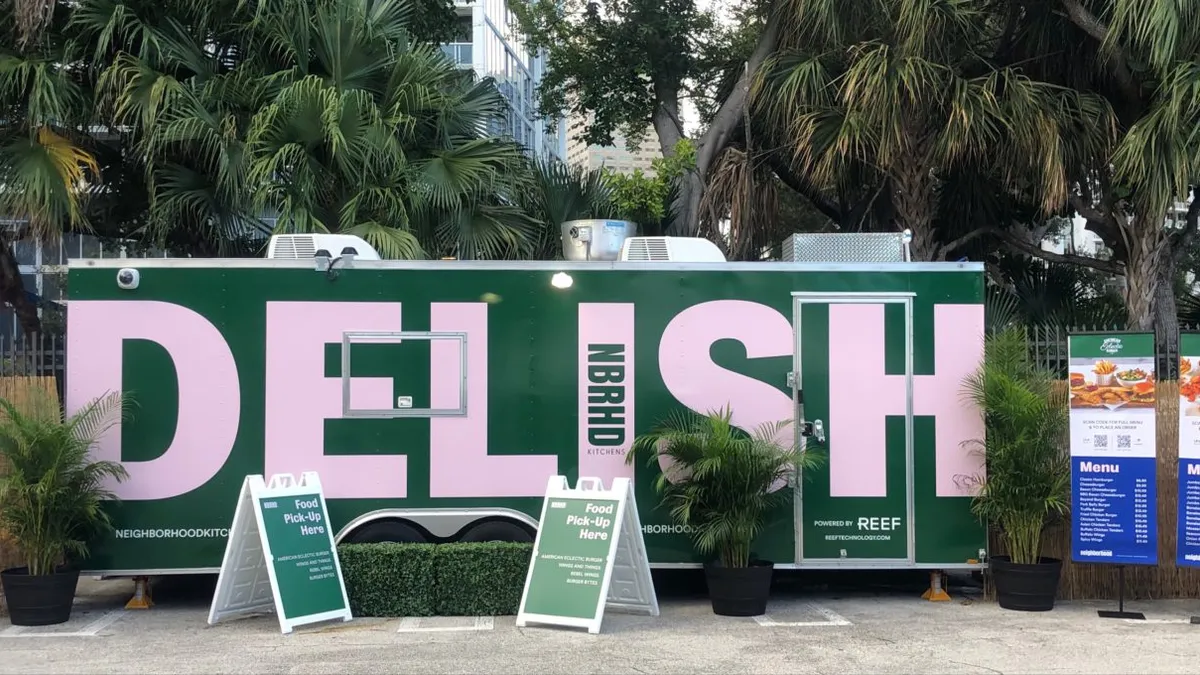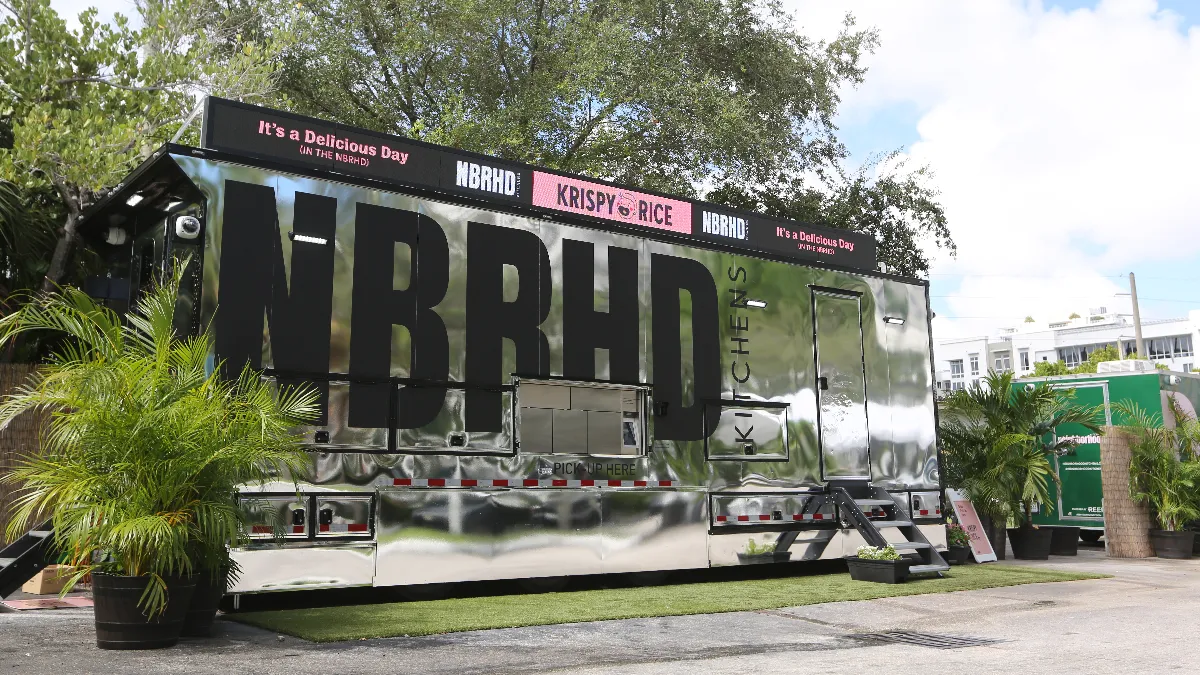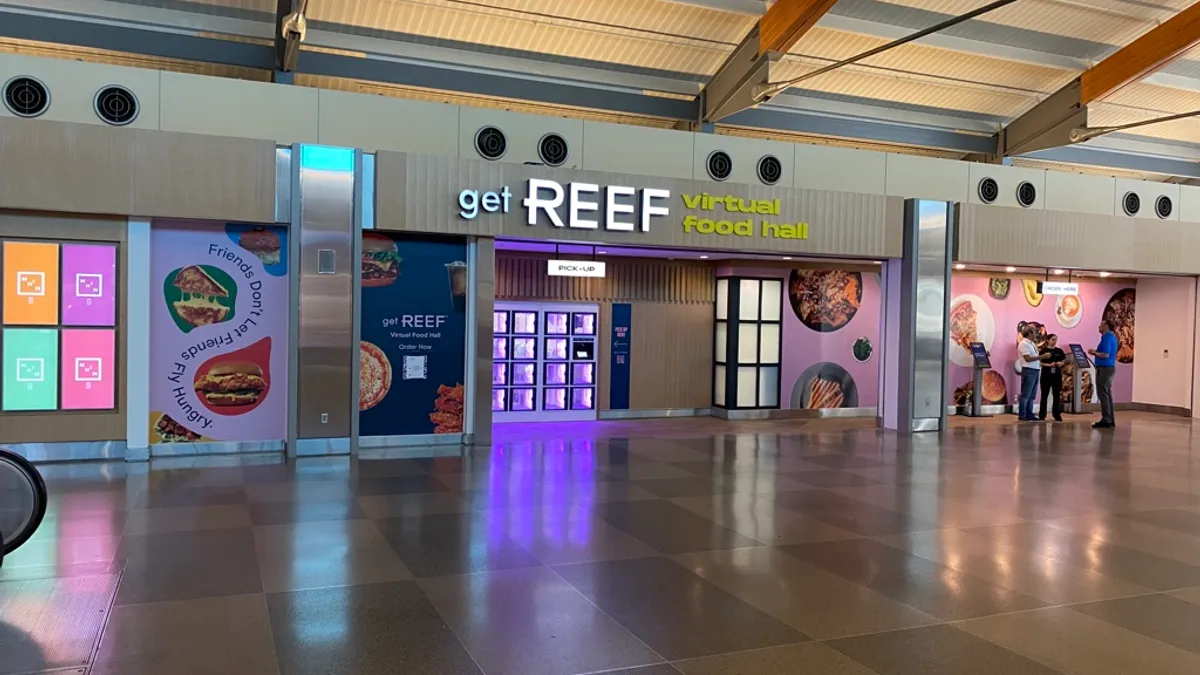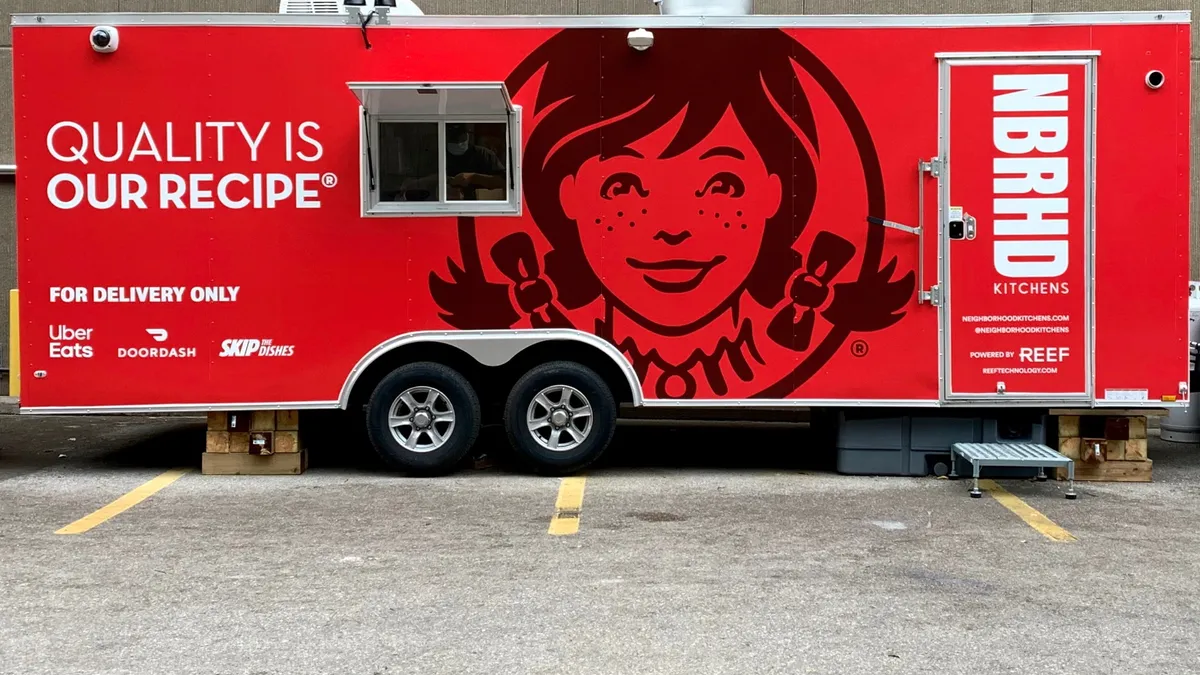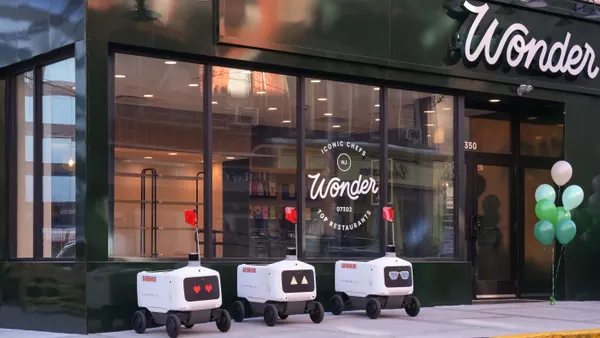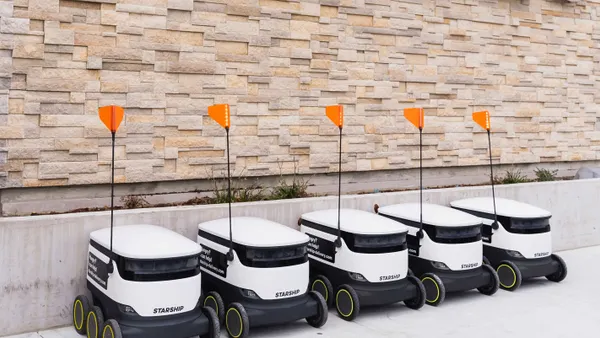Wendy’s and Reef are slashing the number of restaurants they plan to open together by 2025, from an initial estimate of 700 announced last year to between 100 and 150 units, Wendy’s CEO Todd Penegor said Wednesday on its Q2 earnings call.
Wendy’s attributed the pipeline reduction to low unit volumes among the company’s mobile food vessels in the U.S. The planned Reef units will be concentrated primarily in the U.K. and Canada, according to Wendy’s 10-Q filing, where Reef’s vessels have been performing better.
In these two markets, Reef locations generated the equivalent of $500,000 to $1,000,000 in annual unit volumes, Wendy’s CFO Gunther Plosch said. Comparatively, domestic Reef outposts have accrued $500,000 or less in yearly sales.
“We are trying to reposition these vessels into better trade areas,” Plosch said.
Expansion focus shifts from U.S. to U.K. and Canada
Wendy’s will still grow its U.S. operations with Reef, however, targeting urban markets where the vessels can achieve high average unit volumes.
“In the U.S., we will continue to test and learn with Reef with a focus on densely populated high potential markets,” Penegor said.
In March, Wendy’s expected to open 150 to 200 Reef units in 2022, more than it now plans to open with Reef in the entirety of the their partnership. Plosch said Wendy’s had about 70 units operating with Reef at the end of Q2, but that he expected that number to fall to 65 units. He didn’t disclose reasons for the impending closures.
Also in March, Wendy’s plans focused heavily on U.S. development, which it estimated would account for 65% of its Reef unit count, compared to the U.K. (25%) and Canada (10%). Wendy’s now says the U.K. and Canada will account for the bulk of its Reef units.
“We are excited to continue innovating together with a focus on doubling down internationally where we’ve seen very strong economics in our current partnership,” the Reef spokesperson said.
Wendy’s looks to new digital prototype to expand
Wendy’s, in part as a result of its Reef challenges, revised its 2025 unit goal down from 8,500 to 9,000 units to between 8,000 and 8,500 units. But the chain is working to develop a new digitally optimized prototype, which could help Wendy’s in markets where it has abandoned expansion plans with Reef.
Franchisees are excited about the new unit prototype, according to Plosch, which will feature a dedicated pickup window for delivery orders, a reconfigured kitchen, pickup shelving and dedicated parking spaces for mobile orders.
Reef pivots to multi-branded kitchen vessels
Reef has been adding multiple brands to its kitchens to drive sales, Reef said in a statement emailed to Restaurant Dive. But Plosch said on the call that Wendy’s is “simply not comfortable with” this strategy change, contributing to Wendy’s decision to reduce its growth plans for Reef units.
“As REEF continues to focus on profitable growth we are committed to increasing productivity and efficiency by delivering multiple brands from every kitchen in our ecosystem — when deploying our multi-brand model we have seen the average sales per vessel double over the last year,” a Reef spokesperson said.
Reef has also shifted its strategy in recent months to emphasize brick-and-mortar real estate like airport food halls, hotel kitchens and its own standalone commissary kitchens. These types of units avoid some of the regulatory and operational problems that come with mobile food vessels.
Reef has found its mobile food units aren’t always permitted by existing municipal laws, and in some markets, these vessels have seen very high rates of health code violations. On Wendy’s Q2 earnings call, Penegor said permitting issues in U.S. cities are one of the stumbling blocks to expanding Reef and Wendy’s unit count in the U.S.









